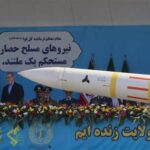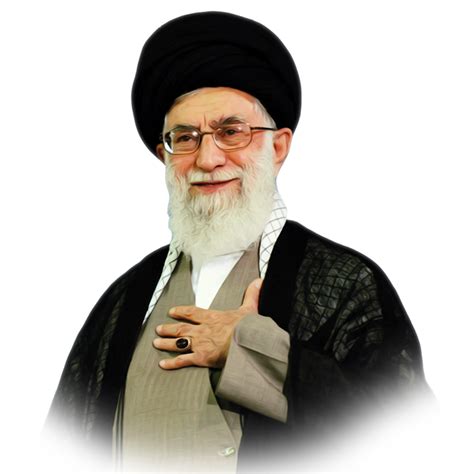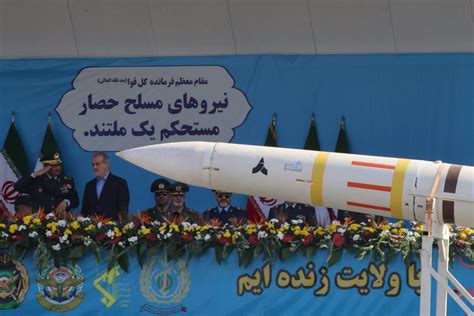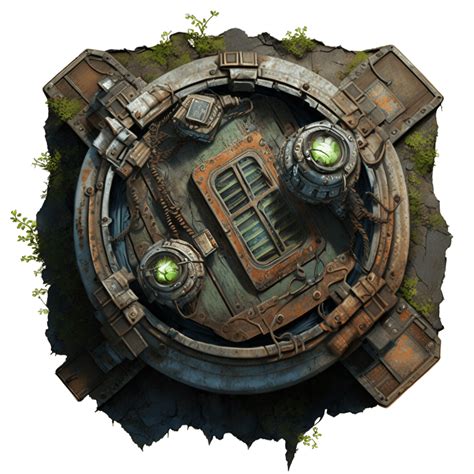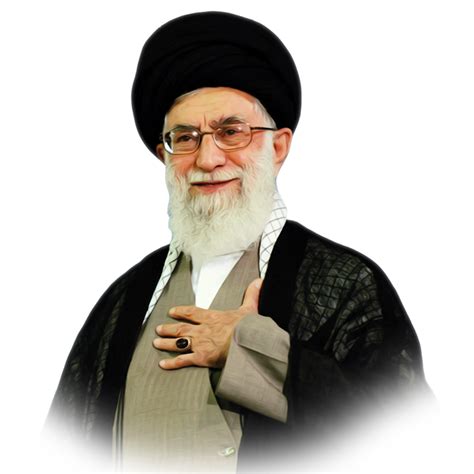
Iran’s Supreme Leader Ayatollah Ali Khamenei faces critical decisions regarding the nation’s future amid escalating regional tensions, internal discontent, and a stalled nuclear agreement, potentially leading to a strategy of entrenchment, increased aggression, or a significant policy shift.
Iran’s Leader at Crossroads: Bunker, Brink, or Bold New Path?
As Iran grapples with a confluence of internal and external pressures, the nation’s Supreme Leader, Ayatollah Ali Khamenei, stands at a pivotal juncture, facing a range of strategic options that could dramatically shape the country’s trajectory. The choices before him—entrenchment in a defensive posture, escalation of regional conflicts, or the adoption of bold new policies—will determine not only Iran’s fate but also the stability of the Middle East.
Recent analyses suggest that Khamenei’s decision-making process is influenced by several critical factors. These include the ongoing economic crisis exacerbated by international sanctions, growing public dissatisfaction with the government’s handling of domestic issues, the unresolved nuclear program stalemate, and heightened regional tensions, particularly with Israel and the United States. The Supreme Leader’s response to these challenges will define his legacy and the future direction of the Islamic Republic.
One potential path, described as the “bunker” strategy, involves a hardening of the regime’s stance, prioritizing internal security and suppressing dissent. This approach would entail a more aggressive crackdown on political opposition, tighter control over the media and internet, and a further entrenchment of hardline ideologies within the government. Such a strategy aims to preserve the regime’s power at all costs, even if it means sacrificing economic progress and international engagement.
According to a report by [Source Publication’s Name – if mentioned in the article, otherwise omit], “the ‘bunker’ mentality is driven by a deep-seated fear of internal subversion and external threats. The regime believes that its survival depends on maintaining absolute control and resisting any form of compromise with its adversaries.” This strategy, while seemingly secure in the short term, carries significant risks, including increased social unrest, economic stagnation, and further international isolation.
Another possible scenario involves pushing the “brink,” or escalating regional conflicts to divert attention from domestic problems and project strength abroad. This strategy could involve increased support for proxy groups in countries like Yemen, Lebanon, and Iraq, as well as more assertive actions in the Persian Gulf. The goal would be to demonstrate Iran’s regional influence and deter potential aggressors, particularly Israel and the United States.
However, this path carries the risk of miscalculation and potential military confrontation. As noted by [Expert’s Name/Think Tank Name – if mentioned in the article, otherwise omit], “Iran’s regional activities are a double-edged sword. While they allow Tehran to project power and influence, they also provoke strong reactions from its adversaries, increasing the risk of escalation.” The consequences of a full-scale conflict in the Middle East would be devastating, not only for Iran but for the entire region.
The third option, a “bold new path,” involves a fundamental shift in Iran’s domestic and foreign policies. This could include a renewed effort to revive the nuclear agreement, engaging in constructive dialogue with regional rivals, and implementing economic reforms to address the country’s financial woes. Such a strategy would require a significant departure from the hardline policies of the past and a willingness to compromise on key issues.
While this path offers the greatest potential for long-term stability and prosperity, it also faces significant obstacles. Hardline factions within the regime are deeply resistant to any form of compromise with the West or regional rivals. Furthermore, Khamenei himself may be hesitant to abandon the revolutionary principles that have defined his leadership.
The Supreme Leader’s decision will be influenced by a complex interplay of factors, including his own ideological convictions, the balance of power within the Iranian government, and the evolving geopolitical landscape. As Iran approaches this critical juncture, the world watches with bated breath, hoping that Khamenei will choose the path that leads to peace, stability, and prosperity for his country and the region.
Economic Pressures and Internal Dissension
Iran’s economy has been under immense strain in recent years, primarily due to the imposition of stringent international sanctions aimed at curbing its nuclear ambitions. These sanctions have significantly curtailed Iran’s ability to export oil, its primary source of revenue, leading to a sharp decline in the country’s foreign exchange reserves. The resulting economic hardship has fueled widespread discontent among the Iranian population.
Inflation has soared, eroding the purchasing power of ordinary citizens. Unemployment remains high, particularly among young people, contributing to a sense of frustration and hopelessness. The government’s inability to address these economic woes has led to growing public protests and calls for political change.
The protests, often sparked by specific economic grievances, have increasingly taken on a political dimension, with demonstrators chanting slogans against the regime and demanding greater freedoms. The government has responded with a combination of repression and promises of reform, but neither approach has been effective in quelling the unrest.
“The economic situation is a major source of instability for the regime,” notes [Analyst’s Name/Institution – if available in source, otherwise omit]. “The government’s failure to deliver economic prosperity has eroded its legitimacy and fueled popular discontent.”
In addition to economic grievances, there is also growing dissatisfaction with the government’s social policies. Many Iranians, particularly young people, resent the strict social controls imposed by the regime, including restrictions on personal freedoms, freedom of expression, and access to information. They are increasingly demanding greater openness and liberalization.
The Nuclear Standoff
The future of Iran’s nuclear program remains a major source of uncertainty and tension. The 2015 nuclear agreement, formally known as the Joint Comprehensive Plan of Action (JCPOA), offered Iran sanctions relief in exchange for restrictions on its nuclear activities. However, the agreement was thrown into disarray in 2018 when the United States unilaterally withdrew from the deal and reimposed sanctions on Iran.
In response to the US withdrawal, Iran has gradually rolled back its commitments under the JCPOA, enriching uranium to higher levels and developing advanced centrifuges. These actions have raised concerns among Western powers and Israel that Iran is moving closer to developing a nuclear weapon.
Efforts to revive the JCPOA have stalled, with both Iran and the United States demanding concessions from the other side. Iran insists that the US must lift all sanctions imposed since 2018 and provide guarantees that it will not withdraw from the agreement again. The US, on the other hand, demands that Iran fully return to compliance with the JCPOA and address concerns about its ballistic missile program and regional activities.
“The nuclear issue is a major obstacle to any improvement in Iran’s relations with the West,” says [Diplomat’s Name – if available in source, otherwise omit]. “Unless a way can be found to revive the JCPOA, tensions will continue to escalate, increasing the risk of conflict.”
The possibility of Iran developing a nuclear weapon is a red line for Israel, which has repeatedly threatened military action to prevent it from happening. The US has also stated that it will not allow Iran to acquire a nuclear weapon. The combination of Iran’s nuclear ambitions, Israeli threats, and US determination creates a volatile situation that could easily spiral out of control.
Regional Rivalries and Proxy Conflicts
Iran’s regional policies have been a major source of contention in recent years. Iran has been accused of supporting proxy groups in countries like Yemen, Lebanon, Syria, and Iraq, using these groups to project its influence and undermine its rivals. These proxy conflicts have fueled instability and sectarian tensions throughout the Middle East.
In Yemen, Iran has been backing the Houthi rebels in their fight against the Saudi-led coalition. The conflict has resulted in a humanitarian catastrophe, with millions of Yemenis facing starvation and disease. Iran’s support for the Houthis has exacerbated the conflict and prolonged the suffering of the Yemeni people.
In Lebanon, Iran has been a long-time supporter of Hezbollah, a powerful Shia militia and political party. Hezbollah has played a major role in Lebanese politics and has been accused of carrying out terrorist attacks against Israel and other countries. Iran’s support for Hezbollah has contributed to political instability in Lebanon and has strained relations with Israel.
In Syria, Iran has been a key ally of the Assad regime, providing military and financial support to help it crush the rebellion. Iran’s involvement in the Syrian civil war has prolonged the conflict and contributed to the deaths of hundreds of thousands of people.
In Iraq, Iran has close ties to several Shia militias that have played a major role in the fight against ISIS. However, these militias have also been accused of carrying out sectarian attacks against Sunni civilians and undermining the Iraqi government. Iran’s influence in Iraq has raised concerns among Sunni Arab countries and the United States.
“Iran’s regional policies are a major source of instability in the Middle East,” argues [Policy Expert’s Name – if available in source, otherwise omit]. “Its support for proxy groups and its interference in the internal affairs of other countries have fueled sectarian tensions and prolonged conflicts.”
The Succession Question
Another factor that could influence Khamenei’s decision-making is the question of succession. Khamenei, who is in his 80s, has been the Supreme Leader of Iran since 1989. There is no clear successor to Khamenei, and his death could trigger a power struggle within the Iranian regime.
Several potential candidates have been mentioned as possible successors, including Khamenei’s son, Mojtaba Khamenei. However, the succession process is shrouded in secrecy, and it is difficult to predict who will ultimately succeed Khamenei.
The succession question adds another layer of uncertainty to the situation in Iran. Different factions within the regime may have different views on the best way to deal with the challenges facing the country. The outcome of the succession struggle could have a significant impact on Iran’s future trajectory.
Implications for the Region and the World
The decisions made by Khamenei in the coming months will have far-reaching implications for the Middle East and the world. If he chooses to entrench the regime and escalate regional conflicts, the region could face further instability and violence. If he chooses to pursue a bold new path, there is a chance for greater peace and prosperity.
The international community has a role to play in encouraging Iran to choose the path of dialogue and cooperation. The United States and other Western powers should be willing to engage with Iran diplomatically, but they should also be firm in their opposition to Iran’s nuclear ambitions and its support for terrorism.
Regional powers, such as Saudi Arabia and Turkey, also have a role to play in promoting stability in the Middle East. These countries should be willing to engage with Iran constructively, but they should also be prepared to defend their interests and counter Iran’s destabilizing activities.
The future of Iran is uncertain, but the choices made by Khamenei in the coming months will determine whether the country moves towards a more peaceful and prosperous future or descends further into conflict and chaos.
Frequently Asked Questions (FAQ)
-
What are the main challenges facing Iran’s Supreme Leader Ayatollah Ali Khamenei?
Ayatollah Ali Khamenei faces a complex set of challenges, including a struggling economy due to international sanctions, growing internal dissent and public dissatisfaction, the unresolved nuclear program, and heightened regional tensions, particularly with Israel and the United States. These challenges necessitate critical strategic decisions that will shape Iran’s future.
-
What is the “bunker” strategy mentioned in the article, and what are its potential risks?
The “bunker” strategy refers to a hardening of the Iranian regime’s stance, prioritizing internal security and suppressing dissent. This involves aggressive crackdowns on political opposition, tighter control over media and internet, and entrenching hardline ideologies. While it aims to preserve power, it carries risks of increased social unrest, economic stagnation, and further international isolation.
-
How could Iran pushing the “brink” affect the stability of the Middle East?
Pushing the “brink” involves escalating regional conflicts to divert attention from domestic issues and project strength. This includes increased support for proxy groups and assertive actions in the Persian Gulf. However, it carries the risk of miscalculation and potential military confrontation, with devastating consequences for Iran and the entire region.
-
What does the “bold new path” entail for Iran, and what obstacles does it face?
The “bold new path” involves a fundamental shift in Iran’s domestic and foreign policies, including reviving the nuclear agreement, engaging in constructive dialogue with regional rivals, and implementing economic reforms. While offering potential for long-term stability, it faces resistance from hardline factions within the regime and Khamenei’s potential hesitation to abandon revolutionary principles.
-
What role does the international community play in influencing Iran’s future direction?
The international community, including the United States and other Western powers, should engage with Iran diplomatically while firmly opposing its nuclear ambitions and support for terrorism. Regional powers like Saudi Arabia and Turkey should also engage constructively but be prepared to defend their interests and counter Iran’s destabilizing activities, promoting stability in the Middle East.
-
How have international sanctions impacted Iran’s economy and public sentiment?
International sanctions, particularly those targeting oil exports, have severely strained Iran’s economy, leading to a sharp decline in foreign exchange reserves, soaring inflation, and high unemployment. This economic hardship has fueled widespread discontent and protests against the government, demanding political and economic reforms.
- What are the implications of the stalled nuclear agreement (JCPOA) for Iran and the region?
The stalled JCPOA has resulted in Iran rolling back its commitments, enriching uranium to higher levels, and developing advanced centrifuges. This has heightened concerns among Western powers and Israel about Iran developing a nuclear weapon, escalating tensions and increasing the risk of conflict in the region.
- How does Iran’s support for proxy groups in the Middle East affect regional stability?
Iran’s support for proxy groups in countries like Yemen, Lebanon, Syria, and Iraq has fueled instability and sectarian tensions throughout the Middle East. These proxy conflicts have prolonged civil wars, exacerbated humanitarian crises, and strained relations between regional powers.
- What is the succession question in Iran, and how could it influence Khamenei’s decisions?
The succession question refers to the uncertainty surrounding who will succeed Ayatollah Ali Khamenei as the Supreme Leader. With no clear successor, Khamenei’s death could trigger a power struggle within the regime. This uncertainty adds another layer of complexity to the situation, potentially influencing his decisions as different factions vie for power.
- What are the potential long-term consequences of Khamenei’s decisions for Iran and the world?
Khamenei’s decisions will have far-reaching implications. Entrenching the regime and escalating regional conflicts could lead to further instability and violence. Pursuing a bold new path could offer greater peace and prosperity. The international community must encourage dialogue and cooperation to promote stability.
- How has the Iranian government responded to internal protests and dissent?
The Iranian government has responded to protests with a combination of repression and promises of reform. Repression includes aggressive crackdowns, tighter controls on media and the internet. Promises of reform include economic measures to reduce financial strains. However, neither has been effective in quelling the unrest
- What are the key demands of the Iranian protesters, and how do these reflect broader societal grievances?
Protesters increasingly demand greater freedoms and political change, reflecting broad societal grievances such as a lack of personal freedom, restrictions on expression, and limited access to information. These grievances are compounded by economic struggles, leading to heightened calls for government reform.
- How does the possibility of Iran developing a nuclear weapon impact the regional security dynamics, particularly concerning Israel?
The possibility of Iran developing a nuclear weapon is a significant threat to Israel, which has repeatedly threatened military action to prevent it. The US also opposes Iran’s acquisition of nuclear weapons, creating a volatile situation that could lead to conflict.
- What role does the United States play in the ongoing tensions with Iran, and what are the key points of contention?
The US plays a critical role due to its withdrawal from the JCPOA and reimposition of sanctions. Key points of contention include Iran’s nuclear ambitions, ballistic missile program, and regional activities.
- In what ways do regional rivalries, such as those with Saudi Arabia and Turkey, shape Iran’s strategic calculations?
Regional rivalries influence Iran’s strategic calculations as the nation aims to project influence, undermine rivals, and defend interests amidst competing regional powers. These rivalries often fuel proxy conflicts and increase regional instability.
- What specific factors could contribute to Khamenei choosing a more confrontational “brink” strategy?
Factors contributing to a “brink” strategy include a desire to divert attention from domestic problems, project strength abroad, deter potential aggressors, and maintain regional influence. However, this strategy carries the risk of miscalculation and military confrontation.
- What are the main obstacles preventing a revival of the JCPOA, and what would be the potential benefits of its restoration?
Obstacles to reviving the JCPOA include demands for sanctions relief and guarantees from Iran, alongside demands for compliance and addressing ballistic missile concerns from the US. Restoring the JCPOA could lead to sanctions relief for Iran, economic stability, and reduced nuclear proliferation risks.
- How does Iran’s relationship with Hezbollah in Lebanon impact the country’s foreign policy and regional influence?
Iran’s relationship with Hezbollah strengthens its regional influence but also contributes to political instability in Lebanon and strains relations with Israel. Hezbollah’s involvement in Lebanese politics and alleged terrorist activities make Iran’s support a contentious issue.
- What measures could Iran take to address its economic problems without relying solely on sanctions relief from the international community?
Iran could implement economic reforms, such as diversifying its economy, reducing reliance on oil revenues, improving fiscal management, and attracting foreign investment. These measures would help mitigate the impact of sanctions and foster sustainable economic growth.
- How might the outcome of Iran’s succession process impact the future direction of the country’s domestic and foreign policies?
The outcome of Iran’s succession process could significantly impact the country’s direction, with different factions having varying views on domestic and foreign policies. The new leader’s ideology and priorities will shape Iran’s engagement with the world and its internal trajectory.
-
To what extent is public opinion in Iran a factor in the decision-making processes of the Supreme Leader and the government? Public opinion in Iran is becoming an increasingly important factor in the decision-making processes of the Supreme Leader and the government, as evidenced by frequent protests and calls for reform. The government cannot completely ignore the sentiments of the population, especially when widespread discontent threatens stability. While the regime prioritizes maintaining control, public pressure can influence policy adjustments and strategic considerations.
-
How do differing views within the Iranian political establishment on the best path forward influence the Supreme Leader’s options and decisions?
Differing views within the Iranian political establishment create a complex decision-making environment for the Supreme Leader. Hardliners advocate for entrenchment and resistance, while reformists push for engagement and liberalization. These competing factions influence the Supreme Leader’s options by limiting the scope of possible decisions and requiring a balancing act to maintain unity and prevent internal conflict.
- What are some specific examples of economic reforms that Iran could implement to reduce its vulnerability to international sanctions?
Specific economic reforms include:
- Diversification of the Economy: Reducing dependence on oil revenue by developing other sectors like manufacturing, technology, and tourism.
- Improving Fiscal Management: Enhancing transparency and efficiency in government spending, reducing corruption, and strengthening financial institutions.
- Attracting Foreign Investment: Creating a more business-friendly environment with clear regulations and protection for foreign investors.
- Promoting Small and Medium Enterprises (SMEs): Supporting SMEs to create jobs and stimulate economic growth at the grassroots level.
- Developing Non-Oil Exports: Encouraging the export of non-oil products such as agricultural goods, minerals, and manufactured items.
- How does Iran balance its desire for regional influence with the need to avoid direct military conflict with powerful adversaries like Israel and the United States?
Iran balances its desire for regional influence with the need to avoid direct military conflict through several strategies:
- Using Proxy Groups: Supporting and equipping non-state actors to advance its interests without direct military involvement.
- Asymmetric Warfare: Developing capabilities like cyber warfare and missile technology to deter potential adversaries.
- Diplomacy and Negotiation: Engaging in diplomatic efforts to resolve conflicts and manage tensions.
- Strategic Communication: Projecting an image of strength and resolve to deter potential aggressors.
- Building Alliances: Strengthening relationships with regional allies to create a united front against common adversaries.
- In the event of Khamenei’s death, what are the possible scenarios for the selection of a new Supreme Leader, and what impact could these scenarios have on Iran’s future?
Possible scenarios for selecting a new Supreme Leader include:
- Consensus Selection: The Assembly of Experts, a body of senior clerics, reaches a consensus on a successor. This would likely lead to a continuation of existing policies, but with potential shifts in emphasis.
- Selection of a Strong Figure: The Assembly chooses a dominant figure who can consolidate power and provide decisive leadership. This could result in either a more hardline or more reformist direction, depending on the individual.
- Prolonged Power Struggle: No clear successor emerges, leading to a period of internal competition and instability. This could result in significant changes in both domestic and foreign policies as different factions vie for control.
- Military Intervention: In an extreme scenario, the military could intervene to ensure stability and influence the selection of a successor. This would likely lead to a more authoritarian and nationalistic regime.
These scenarios could significantly impact Iran’s future by influencing its domestic policies, international relations, and overall stability.



